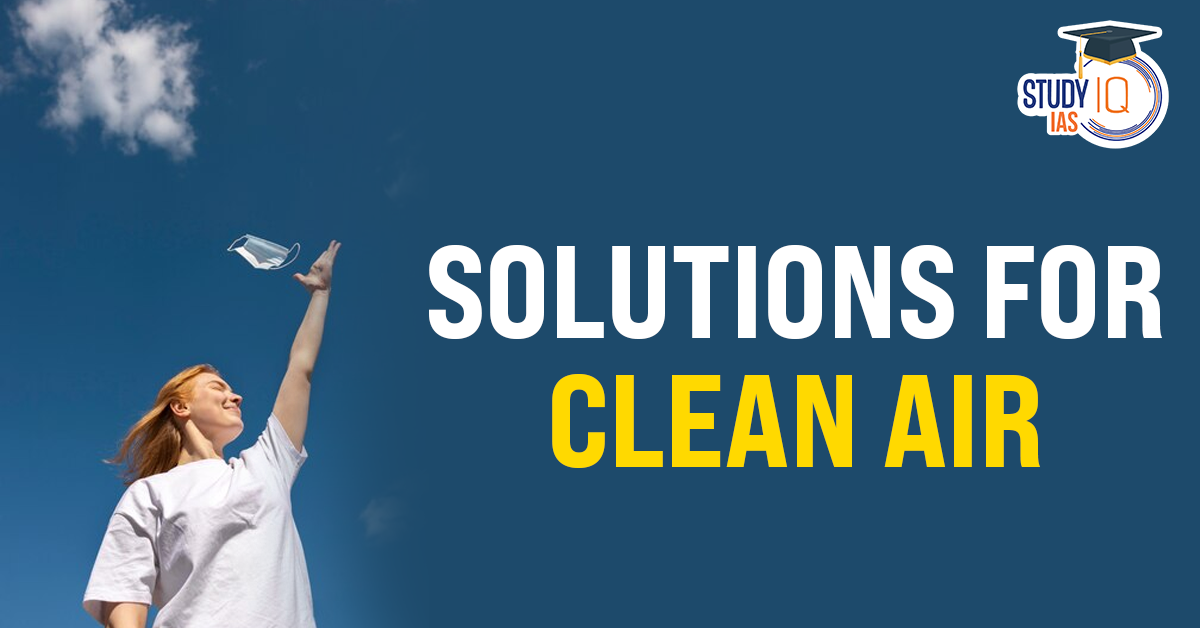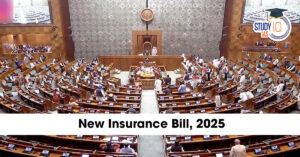Table of Contents
Major Air Pollutants
- Particulate Matter (PM2.5 and PM10): Tiny particles remaining suspended in the air. PM2.5 is more harmful as it can penetrate deep into the lungs.
- Sources: Vehicle emissions, industrial processes, construction and burning of biomass or fossil fuels.
- Nitrogen Dioxide (NO2): A toxic gas that irritates the respiratory system.
- Sources: Vehicular exhaust, industrial activities and power plants.
- Sulphur Dioxide (SO2): Causes respiratory problems and contributes to acid rain.
- Sources: Coal-burning power plants, industrial emissions and burning of fossil fuels.
- Carbon Monoxide (CO): It is an odourless, colourless gas that can cause sudden illness and death if inhaled.
- Sources: Incomplete combustion from vehicles, biomass burning, and industrial activity.
- Ozone (O3): A major component of smog, it harms the respiratory system.
- Sources: Formed by chemical reactions between NOx (nitrogen oxides) and volatile organic compounds (VOCs) in the presence of sunlight.
- Volatile Organic Compounds (VOCs): Organic chemicals that contribute to ground-level ozone formation.
- Sources: Vehicle emissions, industrial processes, and the use of solvents and paints
| Facts |
| ● India is the third most polluted country in the world .
● India is the world’s largest emitter of sulphur dioxide (SO2 worldwide. ● The right to a healthy environment is a part of Article 21. ● Out of the 50 most polluted cities, 42 were in India (IQAir report 2023). About WHO limits on Air pollution● Particulate matter (PM2.5): The annual mean concentration should not exceed 5 μg/m3. ○ µg/m3 is an abbreviation for micrograms per cubic metre. ● Nitrogen dioxide (NO2): The annual mean concentration should not exceed 10 μg/m3. ● Ozone (O3): The peak season mean 8-hour concentration should not exceed 60 μg/m3. ● PM10: The annual mean concentration should not exceed 15 μg/m3, and the 24-hour mean concentration should not exceed 45 μg/m3. ● Sulphur dioxide (SO2): The 24-hour mean concentration should not exceed 40 μg/m3. ● Carbon monoxide (CO): The 24-hour mean concentration should not exceed 7 μg/m3. |
Challenges Associated with Air Pollution
- Health Impact:
- Premature deaths: Nearly 2 million lives lost annually in India due to pollution-related diseases.
- Respiratory diseases: Increased cases of asthma, impaired lung function, and chronic respiratory issues, particularly in children.
- Systemic effects: High pollution levels linked to non-communicable diseases like hypertension, diabetes, and stroke.
- Economic Costs:
- Higher healthcare expenses: Pollution-related diseases lead to increased hospitalizations and financial strain on families.
- Productivity loss: Poor air quality results in missed work and school days, reducing economic output.
- Inequality:
- Vulnerable populations: Pregnant women, children, the elderly, and low-income communities are disproportionately affected.
- Resource disparity: The poorest communities live closer to pollution sources and lack resources for protection.
- Ineffective Implementation:
- Weak enforcement of policies like the National Clean Air Programme (NCAP).
- Fragmented efforts without sufficient ground-level action.
- Dependence on Fossil Fuels:
- Heavy reliance on coal and biomass for energy sustains pollution levels.
- Electric vehicles’ potential is limited by coal-based power for charging infrastructure.
Initiatives to Tackle Air Pollution
- National Clean Air Programme (NCAP): It was launched in 2019 to improve air quality in 131 cities across 24 States and UTs.
- Implementing Agency: Central Pollution Control Board (CPCB)
- Target: To reduce the concentration of Particulate Matter (PM) by 40% by 2026 (Base Year: 2019-20)
- National Ambient Air Quality Standards (NAAQS) by CPCB:
- Pollutants covered: PM10, PM2.5, Nitrogen Dioxide (NO2), Sulphur Dioxide (SO2), Carbon Monoxide (CO), Ozone (O3), Ammonia (NH3), Lead (Pb), Benzene, Benzopyrene, Arsenic, and Nickel.
- National Air Quality Index (NAQI):
- Pollutants covered: PM10, PM2. 5, NO2, SO2, Carbon Monoxide (CO), Ozone (O3), Ammonia (NH3), and Lead (Pb).
- System of Air Quality and Weather Forecasting and Research (SAFAR)
- Pollutants covered:5, PM10, Ozone, Carbon Monoxide (CO), Nitrogen Oxides (NOx), Sulphur Dioxide (SO2), Benzene, Toluene, Xylene, and Mercury.
- It is an initiative of the Ministry of Earth Sciences not of the Ministry of Environment.
| Reasons for NCAP’s Failure |
| ● Weak Regulatory Framework: The Central Pollution Control Board (CPCB) leads the NCAP but lacks statutory enforcement powers, making it difficult to hold entities accountable for non-compliance.
○ State Pollution Control Boards (SPCBs) are crucial for local enforcement but often suffer from inadequate funding and resources. ● Poor Fund Utilization: Between 2019 and 2023, only about 60% of the allocated funds (approximately ₹9,649.99 crore) were utilized by the 131 cities under NCAP. ○ Some cities spent significantly less than their allocations, with New Delhi using less than 30% of its funds. ● Low Public Awareness: Air pollution ranks low on the public agenda, with little demand for clean air. ■ E.g., A nationwide survey conducted by the Association for Democratic Reforms (ADR) across 534 Lok Sabha constituencies, ranking air pollution 17th in priority among governance issues. ● Entrenched Practices: Major contributors to air pollution include industries involved in construction, transport, and agriculture. ○ Practices such as stubble burning and dust from construction sites are deeply rooted and difficult to change. ○ The continued use of internal combustion engine vehicles perpetuates vehicular pollution, especially in states with high car ownership. Solutions to Strengthen NCAP● Transform NCAP from a guideline document into a mission that ties financial incentives directly to air quality outcomes similar to the Swachh Bharat Mission (SBM). ● Increase public awareness about the health and economic impacts of air pollution through education, community engagement, media campaigns, and policy advocacy. ● Grant urban local bodies (ULBs) greater fiscal autonomy to sustain air quality gains and identify potential revenue streams targeted at specific action points. ● The government should increase costs associated with pollution while providing incentives for cleaner practices. ○ E.g., Successful initiatives like the Crop Residue Management scheme can be expanded to other polluting sectors through targeted incentives and disincentives. ● Enhance monitoring systems to ensure accurate data collection on air quality, enabling informed decision-making and effective policy implementation. |
Solutions
- Health-Centric Policies:
- Prioritize public health in environmental policies.
- Link pollution explicitly to health outcomes, such as listing it on death certificates to raise awareness.
- Localized and Regional Approaches:
- Tailor strategies for specific pollution sources (industrial emissions, stubble burning, vehicle congestion).
- Focus on state and city-level interventions for better implementation.
- Clean Energy Transition:
- Shift from coal to renewable energy.
- Provide cleaner cooking fuel alternatives to rural households reliant on biomass.
- Regulatory Reforms:
- Establish a unified regulatory body similar to the United States Environmental Protection Agency to streamline policies and enforce environmental standards.
- Strengthen enforcement mechanisms to ensure compliance.
- Community Engagement and Public Awareness:
- Encourage public participation in reducing pollution at the local level.
- Promote initiatives like reduced waste burning and responsible vehicle use.
- Programs like Dr. Kumar’s “My Solution to Pollution” campaign to involve communities in reducing pollution through small actions (e.g., avoiding vehicle idling near schools).
- Systemic Changes:
- Revamp transportation, energy, and health sectors to integrate sustainability and pollution control.
- Invest in clean air as a long-term economic and social benefit.
| NCR and Surrounding Areas Specific Solutions For Cleaner Air |
| ● Crop Diversification: Shift 1-1.5 million hectares of paddy cultivation in Punjab and Haryana to other Kharif crops like pulses, oilseeds, millets, or kharif maize.
○ Paddy cultivation contributes to groundwater depletion, greenhouse gas (GHG) emissions, and stubble burning. ○ Incentives Needed: ■ Increase subsidies for switching to other crops from ₹17,500/ha to ₹35,000/ha for at least five years. ■ Ensure assured procurement of alternative crops like pulses and oilseeds at Minimum Support Prices (MSP). ● Electric Vehicles (EV) Policy: Achieve 25% of new vehicle registrations as EVs by 2024 (extended to 2025). ○ Establish at least 30,000 EV charging points across Delhi. ○ Make it mandatory for residential areas, offices, and malls to have EV charging facilities. ● Innovative Technologies: Install vacuum cleaning towers (smog towers) at major traffic crossings and high-pollution areas. |


 New Ramsar Sites in India: Latest Additi...
New Ramsar Sites in India: Latest Additi...
 Lok Adalats in India: Meaning, Types, Ca...
Lok Adalats in India: Meaning, Types, Ca...
 New Insurance Bill, 2025: Key Provisions...
New Insurance Bill, 2025: Key Provisions...

























